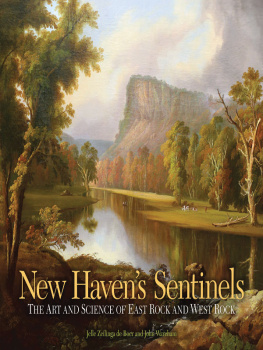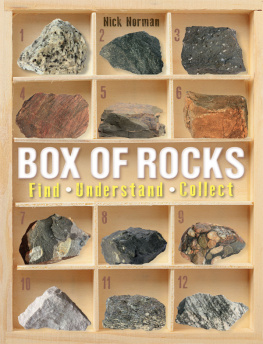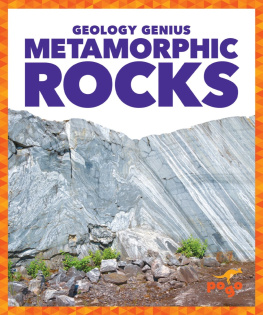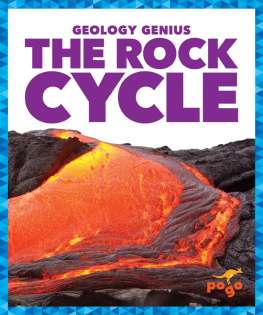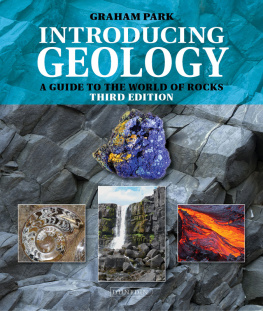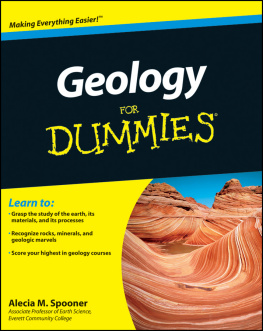
New Havens Sentinels
A Driftless Connecticut Series Book
This book is a 2013 selection in the Driftless Connecticut Series, for an outstanding book in any field on a Connecticut topic or written by a Connecticut author.
New Havens Sentinels
THE ART AND SCIENCE OF EAST ROCK AND WEST ROCK
Jelle Zeilinga de Boer and John Wareham

Wesleyan University Press
Middletown, Connecticut
Wesleyan University Press
Middletown CT 06459
www.wesleyan.edu/wespress
2013 by Jelle Zeilinga de Boer and John Wareham
All rights reserved
Manufactured in China
Designed by David Wolfram

This book has been printed on paper certified by the Forest Stewardship Council.
THE DRIFTLESS CONNECTICUT SERIES is funded by the
Beatrice Fox Auerbach Foundation Fund
at the Hartford Foundation for Public Giving.
Library of Congress Cataloging-in-Publication Data
Zeilinga de Boer, Jelle.
New Havens sentinels : the art and science of East Rock and West Rock / Jelle Zeilinga de Boer and John Wareham.
pages cm. (The driftless Connecticut series)
Includes bibliographical references.
ISBN 978-0-8195-7374-2 (cloth : alk. paper) ISBN 978-0-8195-7375-9
(ebook)
1. GeologyConnecticutNew Haven Region. 2. GeologyConnecticut. 3. Landscape painting, American19th century. 4. New Haven (Conn.) RegionIn art. I. Wareham, John. II. Title.
QE93.Z448 2013
557.467dc23
2012043188
5 4 3 2 1
Front cover illustration by William Wall (1792ca. 1864), East Rock from the South, 1834. The New Haven Museum & Historical Society.

Publication of this book was supported by Furthermore: a program of the J. M. Kaplan Fund.
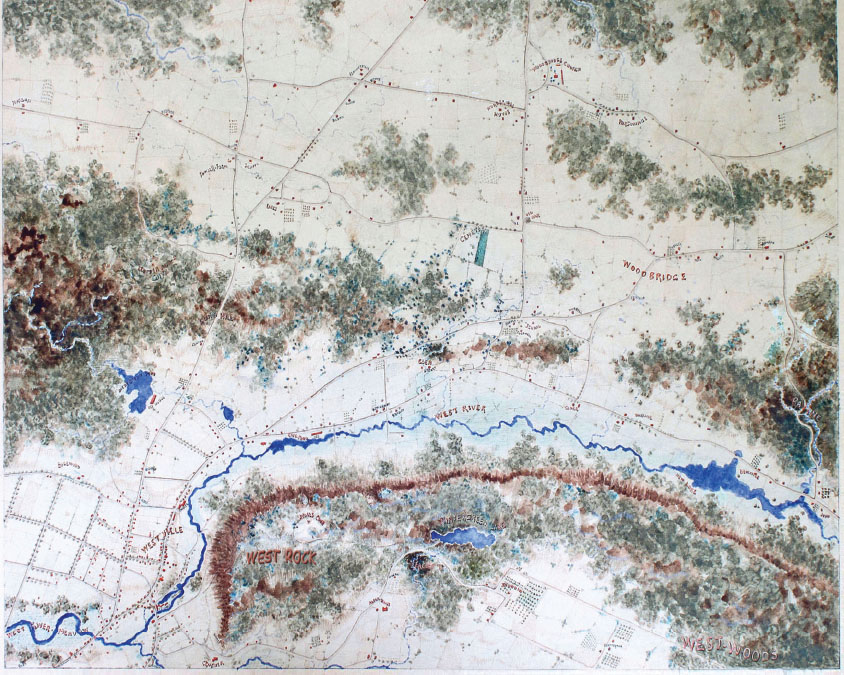
64. Front Endpaper. Donald Grant Mitchell (1822-1908), West Woods, 1892.
Amity and Woodbury Historical Society.
To Bjorn, Byrthe and Babette
JZdB
Contents
List of Illustrations
Foreword
___________________
A century ago, Benjamin Silliman, professor of chymistry and natural sciences at Yale College (now Yale University), described East Rock and West Rock as forming bold and beautiful features in the scenery around New Haven looking like an immense work of art. The Rocks, he noted, were indispensable stops for a geology course. For that reason, I too brought Wesleyans students to these ragged hills on many occasions.
Then, one autumn day about five years ago, I walked past the New Haven Museum and decided to have a look inside. The first thing I noticed when I entered its beautiful rotunda were paintings of East Rock and West Rock by George Henry Durrie. I had previously seen Frederick Churchs painting of West Rock in the New Britain Museum of American Art and I had become aware that those prominences north of New Haven had attracted artists, but I had no idea that quite a few painters had used those hills as subjects for their landscapes.
It became a challenge to find out. After spending several years visiting museums and libraries I found that in the nineteenth century more than a dozen painters had captured the magic of these prominences. These artists had produced a native, homegrown body of work that appears to have attracted little attention in general. It seemed interesting to combine their art with the geological aspects of the Rocks, and I went to see Walter Miller, president and CEO of the New Haven Museum, with a proposal for an exposition that would show a selection of the paintings with explanations of their geological setting and origin. Walter Miller said that he would give it some thought. In the meantime he invited me to take a look at paintings in the museums basement. There were a surprising number of canvasses featuring East Rock and/or West Rock stored there. Most unexpected was a large oil of East Rock attributed to William Guy Wall, renowned for his Hudson River Portfolio (18201825), a true masterpiece. I convinced video production coordinator John WarehamWesleyans photographerto help produce photo reproductions of these works. After we showed our collection and a preliminary text, Walter Miller gave his approval for organizing the exhibition.
On January 12, 2012, New Havens Sentinels: The Art and Science of East and West Rock, opened and ran until June 2012. Sentinels refers to the name Lydia Sigourney gave East and West Rock in her poem Moonlight at Sachems Wood (1844) and seemed appropriate because of the way they seem to guard New Havens northward access to the Connecticut Valley.
I hope this book, an outflow of that exhibition, will pique your interest in these geological eminences and the artistic treasures that captured their beauty.
Jelle Zeilinga de Boer
Haddam, Connecticut
September 30, 2012
___________________

Figure 1. George H. Durrie (18201863), West Rock, 1848.
The New Haven Museum & Historical Society.
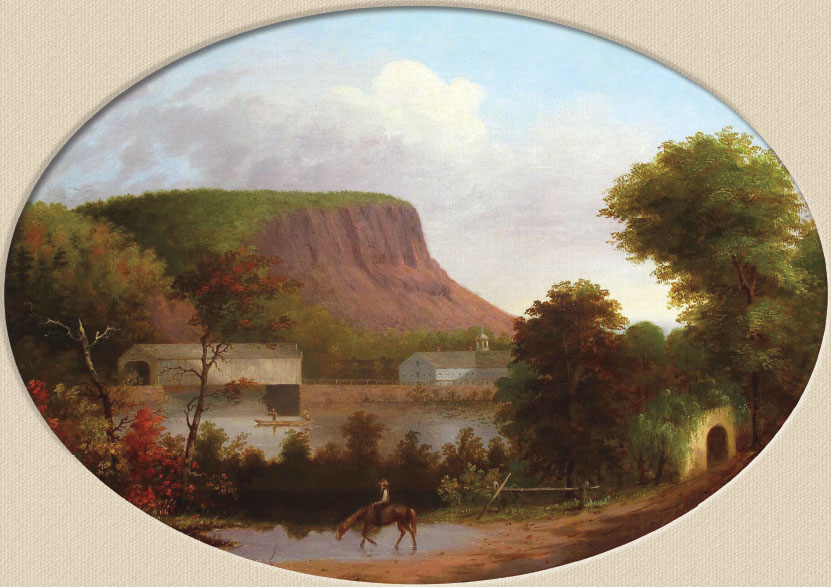
Figure 2. George H. Durrie (18201863), Ithiel Towns Bridge Near East Rock, 1847.
The New Haven Museum & Historical Society.
Introduction
___________________

3. The Four Rocks of the New Haven Region. (Chester R. Longwell and Edward S. Dana, Plate II, 1932.)
This rather detailed map shows the outcrops of the four igneous complexes north of New Haven. West Rock and East Rock are thick, eastward-tilted slabs of basalt (sills) wedged between layers of sandstone. Pine Rock and Mill Rock are relatively thin sheets (dikes) that steeply intersect the sandstone formations. Sachems Ridge and Beaver Hills are glacial drumlins. The numbers represent elevations in feet.
I n 1852, author Mary Field described New Haven, Connecticut, this way:
The Town is situated on a plain which opens northward into a beautiful valley, whose guarding hill-sides terminate in two rocky heights. When seen from the harbor below, these eminences seem near the city, and look like the sides of some huge portal thrown open in welcome to the traveler. They are known as East and West Rock.
Together, East Rock and West Rock, along with Pine Rock and Mill Rock, form a fundamental part of New Havens skyline. To some, these craggy mounts resemble the ruins of a breached medieval wall; to others they mark monumental gateways. For centuries, this city of former rebels and abolitionists has nestled safely in the expanse between the Four Rocks and its shoreline.
East Rock and West Rock are geotopesgeologic sites with noteworthy aesthetic, cultural, historic and scientific value. In the nineteenth century especially, they not only attracted the attention of geologists, but also of poets and painters.
Next page
